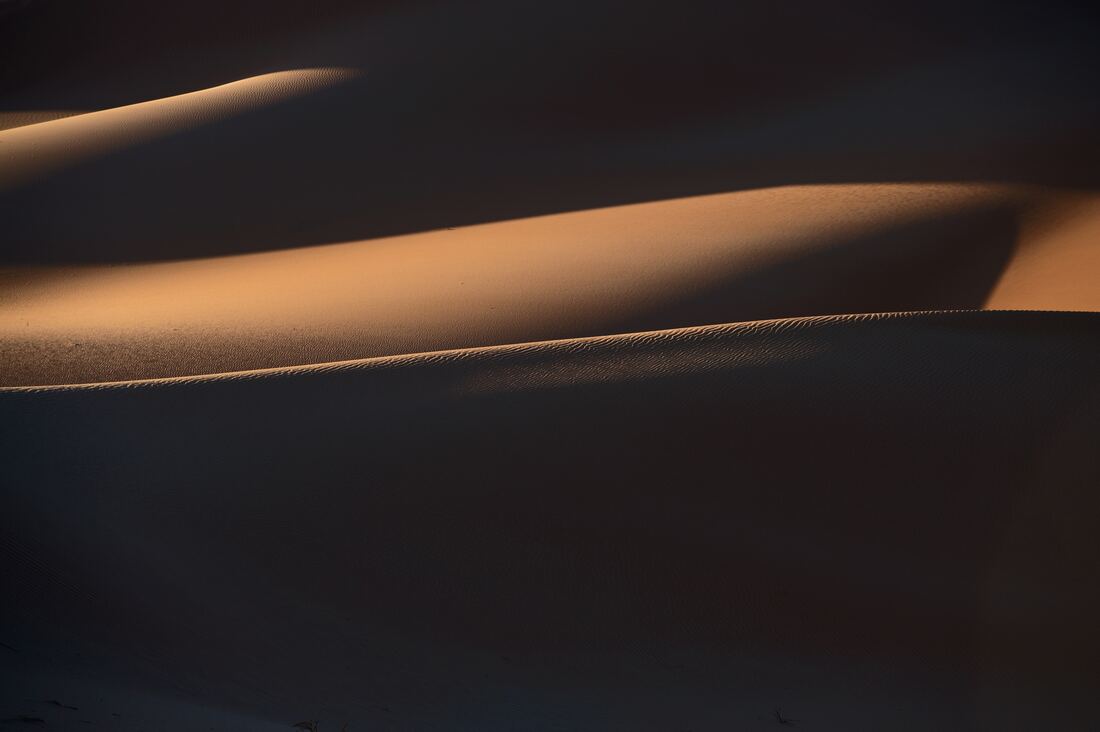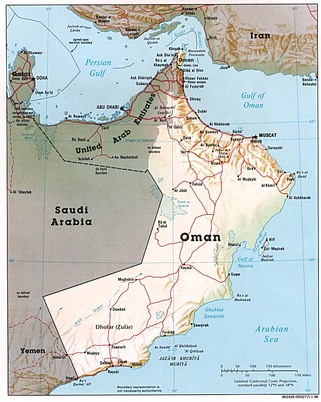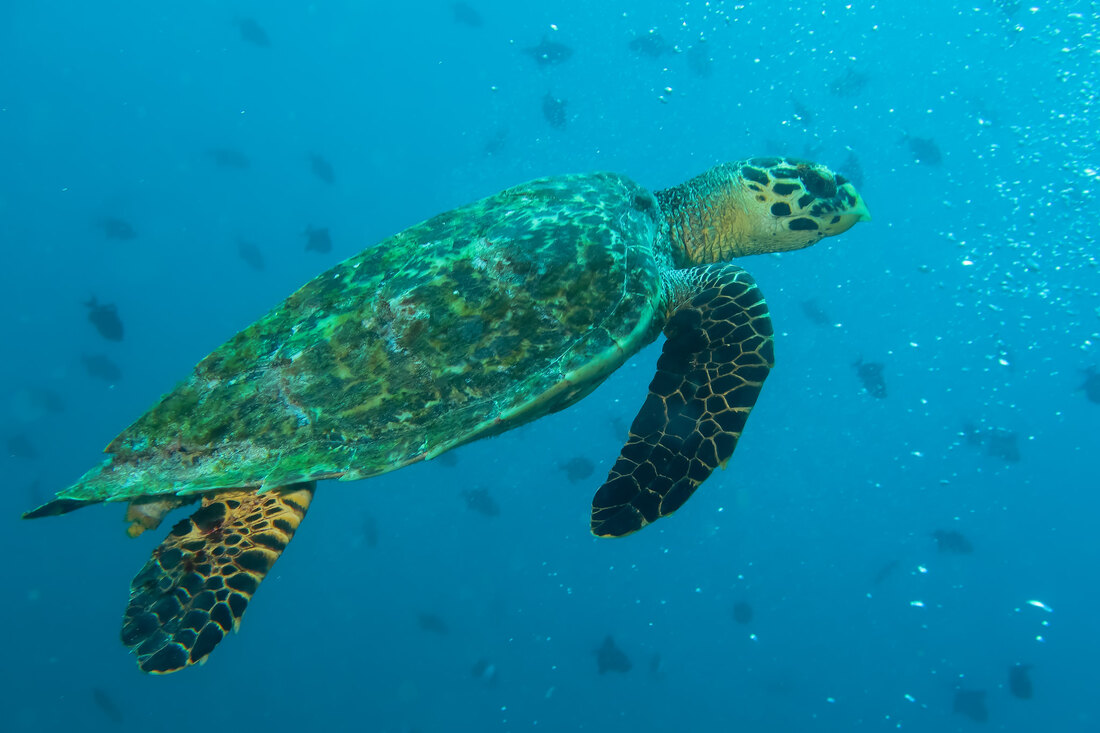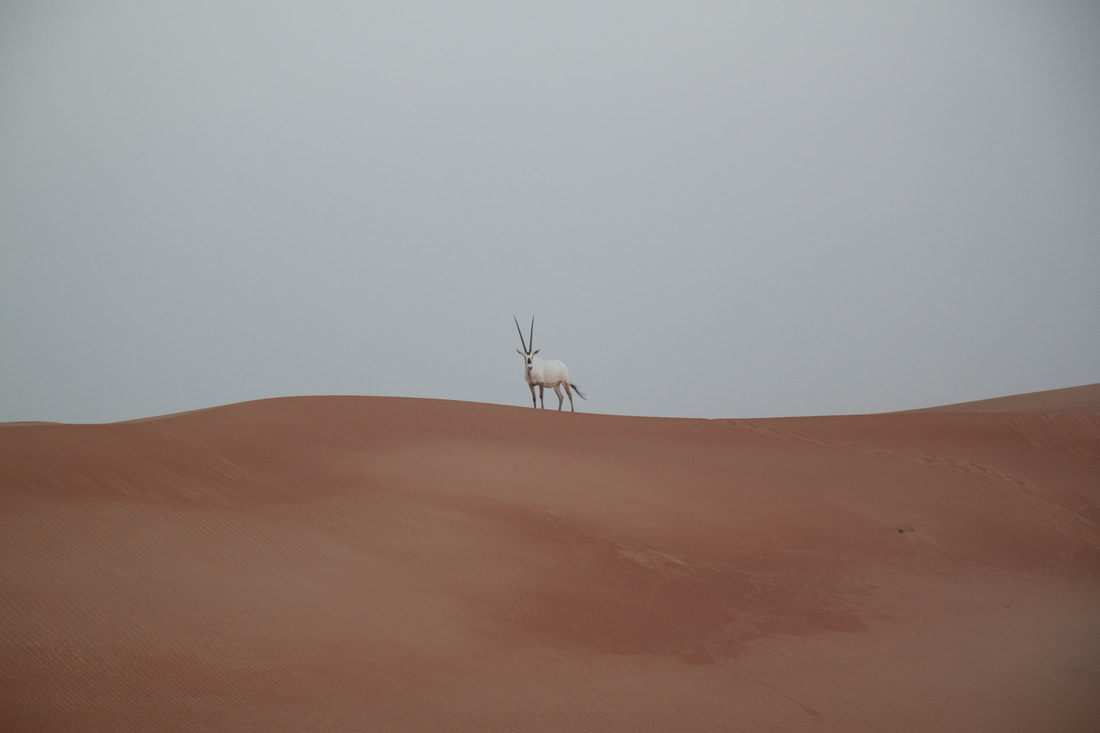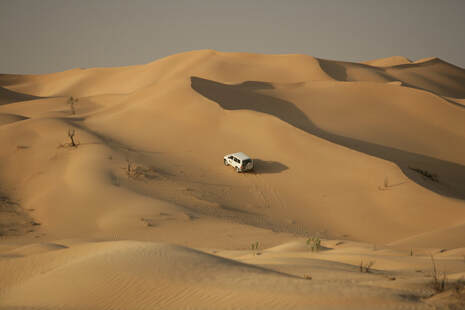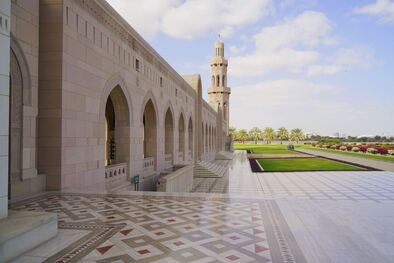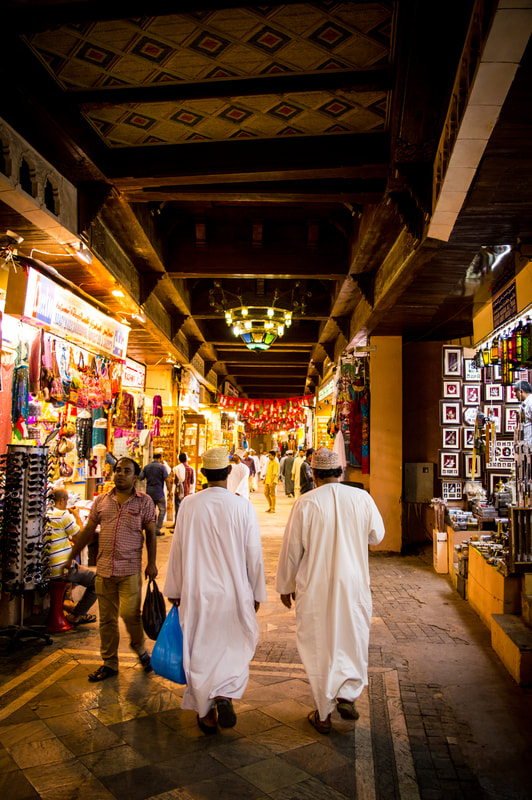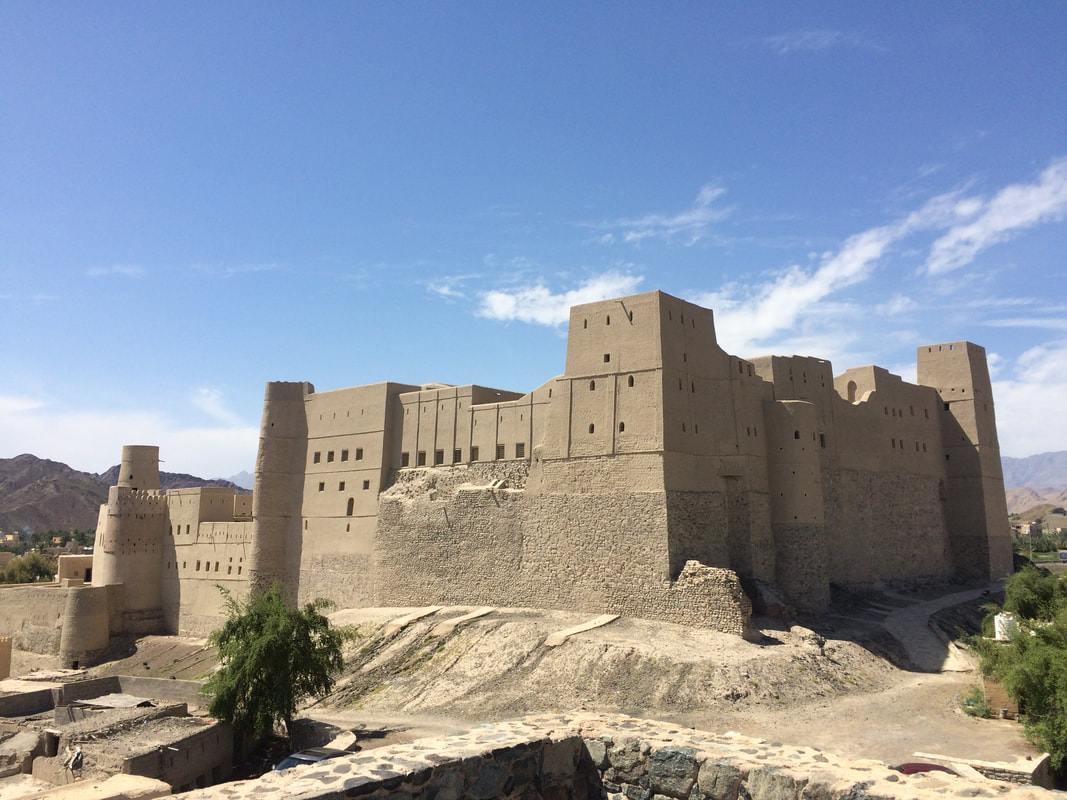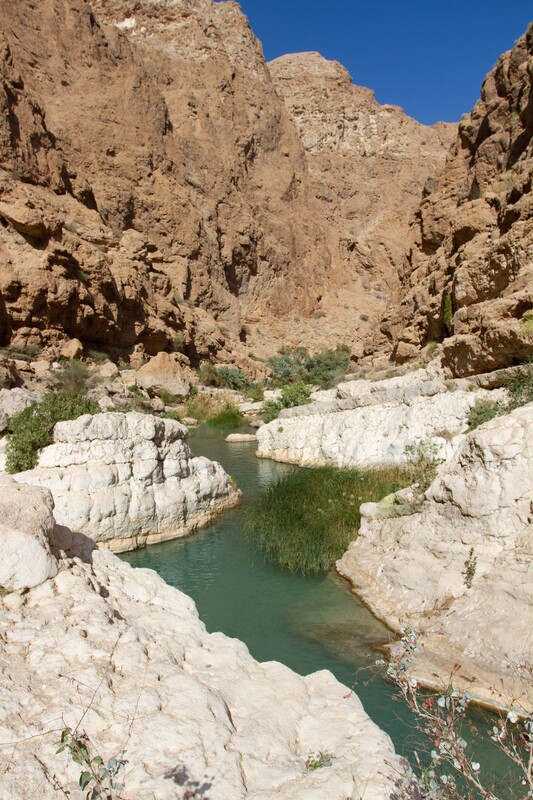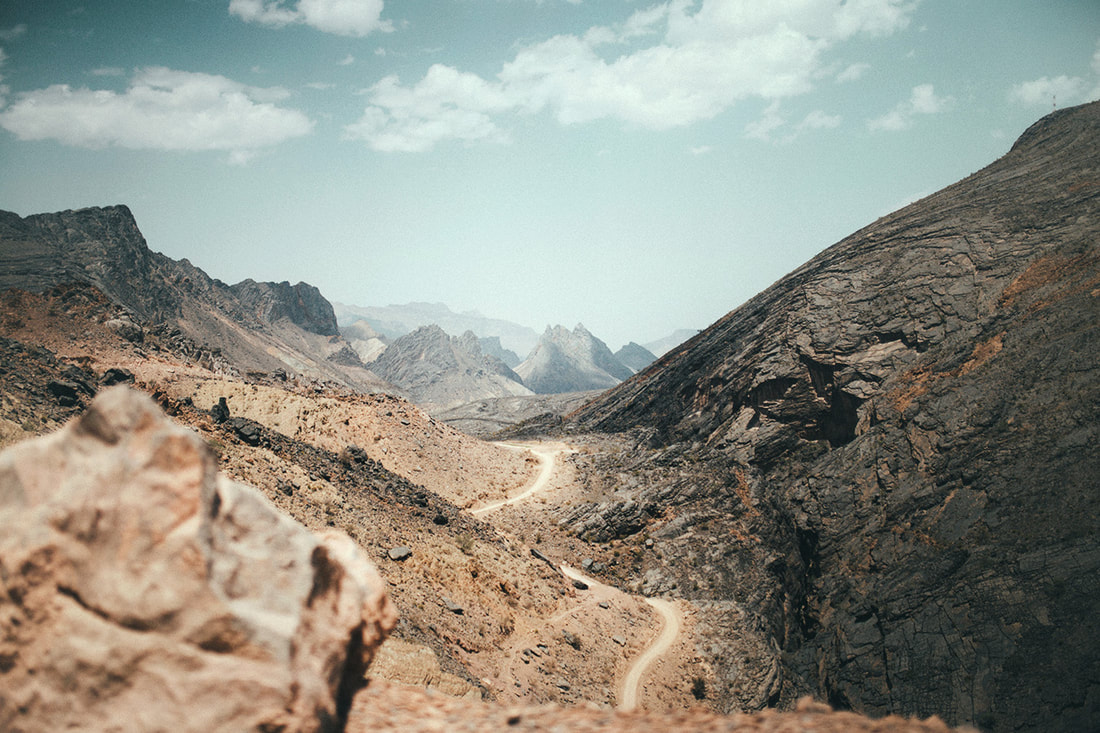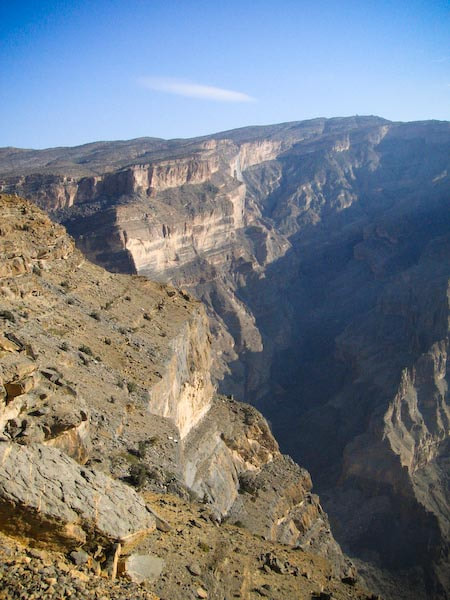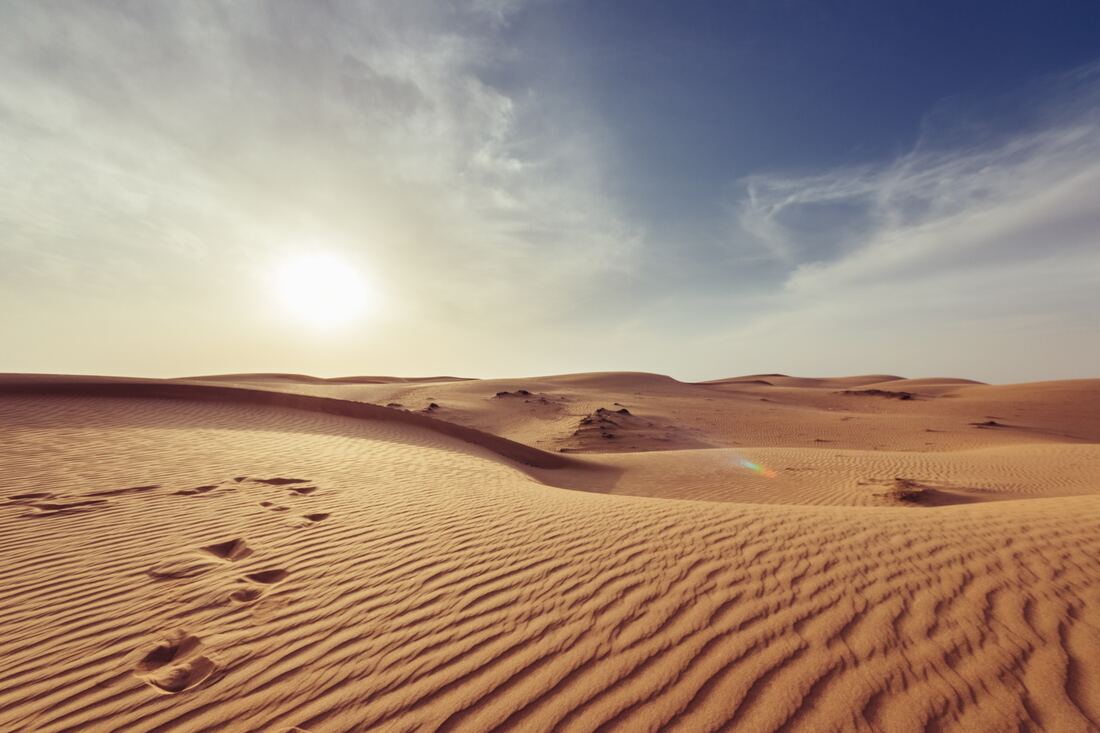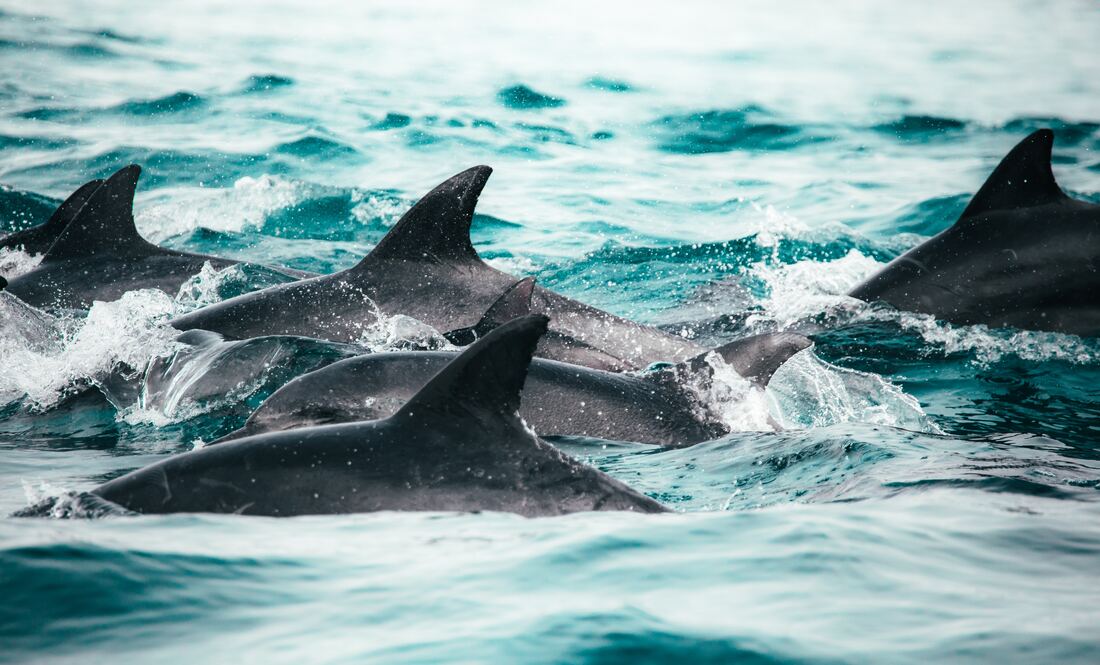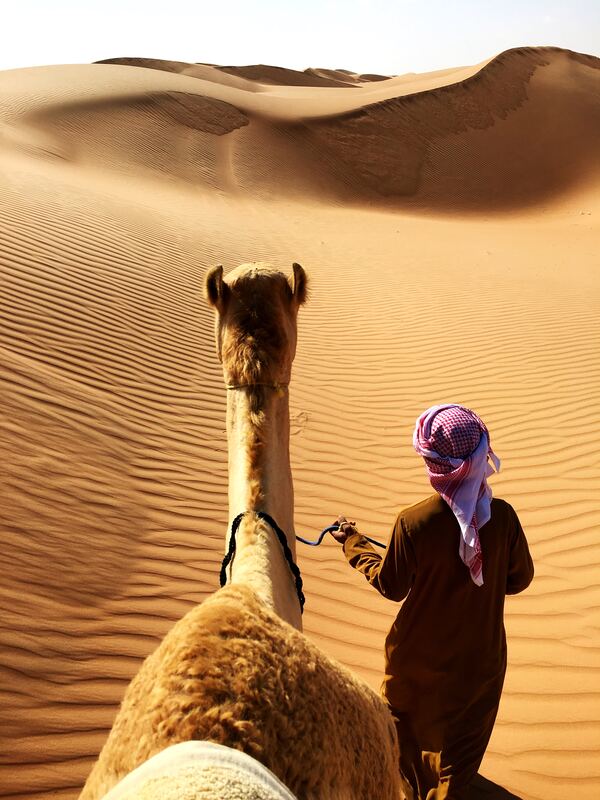|
Lamlha Travel Guide to Oman
Roger Alderson January 20, 2020, London The Middle East invokes conflicting opinions. For many, it is synonymous with conflict, turmoil and intolerance. It doesn’t have a monopoly on warfare and human suffering, but it seems to have more than it’s fair share.
But, it is also known for its beauty, wildlife and ancient cultural sites. |
Photo by Christian Weiss
|
Ever since I was a boy, I’ve been fascinated by the region. I remember losing myself in the pages of National Geographic learning about the wonders of locations like Afghanistan, Syria and Iraq. But those places have consistently topped the list of the most dangerous on the planet. Intrepid travellers do visit, and most survive the experience, but I’ve never been brave enough to (knowingly) enter an active conflict zone.
Of course, there are places in the Middle East that are safe to visit such as Egypt, Jordan, Kuwait, Bahrain, the United Arab Emirates (UAE), and even to some degree, Saudi Arabia. The UAE in particular has established itself as one of the foremost vacation destinations in the world, with tourism contributing $19bn to the annual economy. Dubai is now the fourth most visited city in the world (behind Bangkok, Paris and London) and the foremost city for tourist spending.
UAEs neighbour to the south, Oman, has a more modest tourism income of $3bn, but this is growing fast. As a stable middle-eastern country with an incredibly diverse geography that ranges from desert to tropical sea, it has a lot to offer the international adventure traveller.
Of course, there are places in the Middle East that are safe to visit such as Egypt, Jordan, Kuwait, Bahrain, the United Arab Emirates (UAE), and even to some degree, Saudi Arabia. The UAE in particular has established itself as one of the foremost vacation destinations in the world, with tourism contributing $19bn to the annual economy. Dubai is now the fourth most visited city in the world (behind Bangkok, Paris and London) and the foremost city for tourist spending.
UAEs neighbour to the south, Oman, has a more modest tourism income of $3bn, but this is growing fast. As a stable middle-eastern country with an incredibly diverse geography that ranges from desert to tropical sea, it has a lot to offer the international adventure traveller.
introductionThe Sultanate of Oman (to give it its full name) is at the northwest extremity of the Arabian Sea. It has land borders with UAE to the north, Saudi Arabia to the northwest, and Yemen to the southwest, and marine borders with Iran, Pakistan and India. It also has two small exclaves within UAE one of which (Musandam) is a peninsula that juts directly into the narrowest section of Strait of Hormuz making it one of the most strategically important areas of land in the entire world.
Politically, despite being an absolute monarchy (where what the Sultan says is law … is law), Oman is a moderate country with a well-developed foreign policy. It has been instrumental in fostering middle-eastern stability and has even walked the tightrope of diplomatic relations between Iran and the USA. Omanian People are friendly and westerners can move around, freely provided that they maintain an appropriate level of respect for the local culture. For example, in public, women should dress ‘modestly’ in clothes that cover the tops of arms and legs. During Ramadan (typically April-May) eating, drinking and smoking in public places during daylight hours is not just frowned upon, it is forbidden. Homosexuality is illegal as is sharing a hotel room with somebody of the opposite sex if you are not married (to each other). Even public displays of affection are generally frowned upon and can get people into trouble. |
From a climate perspective, Oman is … hot! In general, unless you like very hot weather, it’s best to avoid Oman in June-August in favour of October-April. Summer temperatures in the north average 30-40C and annual rainfall (typically in January) is around 100 mm. Some parts of the coast, such as the island of Masirah, can receive no rain at all within the course of a year and temperatures can reach beyond 50C during the summer. In the south, particularly in the Mountainous region, there is a more tropical climate with summer temperatures of 20-30C. Monsoon winds from the Indian Ocean during June to September can bring as much as 400mm of rain while in winter the mountains in the north can get an occasional dusting of snow.
|
For wildlife Oman has nine endangered species of mammals, five endangered types of birds, and nineteen threatened plant species. There are wonderful animals in Oman, but the harsh environment means that they’re hard to find without specialist knowledge (and local guides). If you’re lucky, there’s the potential to see leopard, hyena, mountain gazelle, tahr, fox, wolf, hare, oryx and ibex. But, to be honest, it’s unlikely that you’ll see any of that list. Marine wildlife watching is a more certain activity and there are excellent chances of seeing (endangered) green sea turtles, whales and dolphins. Sea turtles lay their eggs on the beaches of Oman from July to October.
From a negative perspective, the Oman Arabian Oryx Sanctuary has the dubious honour of being the first site in the world to be deleted from UNESCO's World Heritage List due to the government's decision to reduce the site to 10% of its former size so that the remainder could be opened to oil prospectors. From a more positive perspective, the Al Ansab wetland on the outskirts of Muscat is a wonderful example of how urban/commercial development and wildlife preservation can effectively coexist. getting thereThe days of arriving in Oman with nothing more than a passport and some good ideas ended in 2019. Visitors must now have a passport, good ideas … and ... a visa. Thankfully, obtaining a visa is a straightforward process and can be done online at the Royal Oman Police website. It’s advisable to go to the official ROP website rather than any of the others that pop up when you do an online search. It’s the cheapest option and other sites offering visa services may not be 100% reliable. As of January 2020, a standard 30-day tourist visa is twenty Omani Rial (OMR20), which is around US$50, and can be extended for another 30 days for the same price.
|
Green Sea Turtle - Photo by Omar Flumignan
Arabian Oryx - Photo by Denver Roads
|
The most common way to get to Oman is to fly to Muscat (in the north) or Salalah (in the south). Muscat airport (which is 40km outside of the city) is the main international airport while Salalah is smaller and caters more to charter flights and package holidays. A variety of airlines fly to Oman, although the majority of direct flights are with Oman Air and there are no direct flights from North America. Istanbul, Bahrain and Abu Dhabi are common stopover points.
An alternative to flying into Oman, is to fly to UAE then drive in. Theoretically, it’s an interesting option and provides the opportunity to see two countries at the same time. A joint visa agreement between Oman and UAE means that a visa purchased for one country is also valid for the other – although check that this is still the case before travelling. The only potential issue is rental car agreements. You need to ensure that your rental car is permitted to cross the border into Oman … and back again. In addition to vehicle registration documents and UAE and Oman insurance, you will need documents stating that you are allowed to take the car across the border and appropriate Oman paperwork such as the Oman Minor Road Traffic Accident (MRTA) form, which is a legal requirement to carry.
It’s also possible to enter Oman by land at the Al Farjah border with Saudi Arabia (west of Ibri) but with no Oman/Saudi Arabia visa agreement, this will be more challenging that crossing from the UAE. Entering from Yemen will be an order of magnitude more difficult.
The final option is to arrive by sea. Muscat is becoming a more common stop for cruise ships but it hasn’t traditionally been a popular destination for private sailors. Outside of monsoon season, the Gulf of Oman, Straits of Hormuz and Persian Gulf are not technically challenging to navigate but they are politically challenging. Somalia is just a few hundred miles to the south and the threat from piracy is very real. To add to the complexities, many areas of the Omani coastline are highly sensitive from a military perspective. Sailors should make careful arrangements before entering Omani waters and make direct contact with authorities before entering ports. It is possible to enter Oman by sea, but it takes effort and administrative prowess.
An alternative to flying into Oman, is to fly to UAE then drive in. Theoretically, it’s an interesting option and provides the opportunity to see two countries at the same time. A joint visa agreement between Oman and UAE means that a visa purchased for one country is also valid for the other – although check that this is still the case before travelling. The only potential issue is rental car agreements. You need to ensure that your rental car is permitted to cross the border into Oman … and back again. In addition to vehicle registration documents and UAE and Oman insurance, you will need documents stating that you are allowed to take the car across the border and appropriate Oman paperwork such as the Oman Minor Road Traffic Accident (MRTA) form, which is a legal requirement to carry.
It’s also possible to enter Oman by land at the Al Farjah border with Saudi Arabia (west of Ibri) but with no Oman/Saudi Arabia visa agreement, this will be more challenging that crossing from the UAE. Entering from Yemen will be an order of magnitude more difficult.
The final option is to arrive by sea. Muscat is becoming a more common stop for cruise ships but it hasn’t traditionally been a popular destination for private sailors. Outside of monsoon season, the Gulf of Oman, Straits of Hormuz and Persian Gulf are not technically challenging to navigate but they are politically challenging. Somalia is just a few hundred miles to the south and the threat from piracy is very real. To add to the complexities, many areas of the Omani coastline are highly sensitive from a military perspective. Sailors should make careful arrangements before entering Omani waters and make direct contact with authorities before entering ports. It is possible to enter Oman by sea, but it takes effort and administrative prowess.
getting around
There is no rail network in Oman and limited ferry options so travel is largely confined to the roads. For short journeys (such as airport to hotel) taxis are the easiest option. In Muscat the (government owned) travel organisation, Mwasalat, licences metered taxis, which are red and white. These charge OMR 1 for pickup and OMR 0.2 per km thereafter. Other (official by unmetered) taxis are orange and white and are more common than the metered version. They are typically cheaper but negotiate the price before you get in. There is a Mwasalat taxi app, but Uber (or an equivalent digital service such as Kareem) isn’t currently an option.
Visitors can also get around by bus. Long-distance (town-to-town) buses have A/C and western standards of comfort (but not western standards of on-board entertainment). Smaller local mini-buses (also known colloquially as baisa buses) are less well equipped but very affordable at OMR 0.2 to OMR 0.5 per journey, payable in cash. Mwasalat has a good website with bus schedules, prices and journey lengths and at the time of writing there was mention of a bus app in the not-too-distant future.
It’s worth noting that women typically sit at the back of public transport, next to other women. Some licence is provided for overseas visitors, but be sensible. A women sitting up front, even if accompanied by her husband, or a man sitting at the back with his wife (and other women), will attract unwanted attention.
Visitors to Oman can drive a rental car for 6 weeks on a standard international licence. The driving rules are the same as in most countries including requirements for seatbelts and child seats. The national speed limit is 120kph, dropping to 100kph in city limits and lower in built up areas. Traffic laws are strictly enforced and fines can be heavy. For instance, it is illegal to use a mobile phone whilst driving, there is zero tolerance for drink driving, and driving under the influence of drugs will elicit a (well deserved) lengthy prison sentence. In the city, it’s a good idea to adopt a ‘defensive driving’ approach since minor accidents are not unusual, especially in rush hour. If you are involved in a minor accident (no injuries) cars should be moved to the side of the road and a Minor Road Traffic Accident form completed by all those involved. For major accidents, call the police on 9999.
Visitors can also get around by bus. Long-distance (town-to-town) buses have A/C and western standards of comfort (but not western standards of on-board entertainment). Smaller local mini-buses (also known colloquially as baisa buses) are less well equipped but very affordable at OMR 0.2 to OMR 0.5 per journey, payable in cash. Mwasalat has a good website with bus schedules, prices and journey lengths and at the time of writing there was mention of a bus app in the not-too-distant future.
It’s worth noting that women typically sit at the back of public transport, next to other women. Some licence is provided for overseas visitors, but be sensible. A women sitting up front, even if accompanied by her husband, or a man sitting at the back with his wife (and other women), will attract unwanted attention.
Visitors to Oman can drive a rental car for 6 weeks on a standard international licence. The driving rules are the same as in most countries including requirements for seatbelts and child seats. The national speed limit is 120kph, dropping to 100kph in city limits and lower in built up areas. Traffic laws are strictly enforced and fines can be heavy. For instance, it is illegal to use a mobile phone whilst driving, there is zero tolerance for drink driving, and driving under the influence of drugs will elicit a (well deserved) lengthy prison sentence. In the city, it’s a good idea to adopt a ‘defensive driving’ approach since minor accidents are not unusual, especially in rush hour. If you are involved in a minor accident (no injuries) cars should be moved to the side of the road and a Minor Road Traffic Accident form completed by all those involved. For major accidents, call the police on 9999.
|
Photo by Solresor
|
If you stick to major routes, an ordinary family saloon will be fine. Main roads are generally good, well maintained and clearly signposted in Arabic and English. However, travelling off the main roads is a different story. It’s not unusual to encounter wandering animals and roads can rapidly turn into dirt tracks that can be (very) steep and winding with limited opportunities to turn around. During rainstorms dry riverbeds can transform into raging torrents in a matter of minutes. For this reason (and many more), it’s a good idea to rent at least an AWD vehicle and preferably a true 4x4. It’s also important to check the small print of your rental agreement to ensure that you have coverage to venture off tarmac!
If you are going off road, and especially if you’re heading into more remote areas, do it ONLY in an appropriately equipped vehicle with a generous supply of water and a mobile phone; or even better, a satellite phone. Ideally, travel in a group and leave a copy of your travel plans with friends or relatives and/or use an adventure travel app like Lamlha. |
For accommodation, Oman has an expanding inventory of luxurious hotels and resorts catering to international travellers. They tend to be in the major cities along the coast but properties are opening in the mountains and new luxury desert camps are providing memorable ‘glamping’ experiences. Most smaller towns have a simple local hotel aimed at Omanis rather than tourists. These are usually functional, but comfort and cleanliness may not be what you are accustomed to. WiFi at local hotels is sketchy and even basic electricity can be unreliable. But, that’s all part of the rich tapestry of experience that comes with stepping away from the traditional tourist trail.
Camping is a great option in Oman and pitching a tent in almost any remote location is fine. There are no restrictions provided that you avoid cultivated areas. But, if you want to camp close to a village or other area of human habitation it’s only sensible (and polite) to ask first. This is wild camping at it’s wildest with no facilities at all so pack appropriately. It’s an especially good idea to bring your own water rather than rely on natural water in springs, rivers or pools, which could be contaminated with dangerous bacteria.
Camping is a great option in Oman and pitching a tent in almost any remote location is fine. There are no restrictions provided that you avoid cultivated areas. But, if you want to camp close to a village or other area of human habitation it’s only sensible (and polite) to ask first. This is wild camping at it’s wildest with no facilities at all so pack appropriately. It’s an especially good idea to bring your own water rather than rely on natural water in springs, rivers or pools, which could be contaminated with dangerous bacteria.
|
In general, food is inexpensive (and delicious) in local restaurants, and expensive (and delicious) in hotels and resorts. It’s definitely worth getting away from the tourist restaurants and exploring more traditional locations. Omanis tend to eat with their right hand rather than use cutlery but it isn’t frowned upon to ask for a spoon or fork – or even bring your own. If you’re vegetarian, you should know that a lot of the local food is meat-based (especially lamb, goat and fish). It is possible to get vegetarian options, but this usually means that the food contains no meat. It doesn’t mean that the utensils and cookware used to prepare the food have not been exposed to meat or that food has not been cooked in animal fat. If that’s an issue for you, prepare your own meals from food bought at the supermarket, of which there are plenty. Even smaller towns usually have stores with a good selection of plant-based produce.
One final point in terms of getting around; Oman isn’t (usually) included with any standard mobile phone roaming agreements and the cost of using your home provider can be eye-wateringly high. Instead, buy a local SIM card. There are a variety of phone shops in major towns, and several at the airport. It’s best to do your own research but a provider that is frequently recommended is Omantel and at the time of writing this article a SIM with 2GB of data, is around OMR 3. what to do in omanOman has a tremendous amount to offer, enough to pack into a substantial guidebook. For this article, we’ll look briefly at seven areas: mosques, souks, forts, wadis, mountains, deserts and water sports.
|
Photo by Raya Ra
|
|
Mosques
There are hundreds of mosques scattered all over Oman. Even small towns well off the beaten track can have beautiful mosques, some of which are ornate and elaborate while others are elegantly simple. All of them are peaceful, relaxing and restorative places. Of course, none compare to the Grand Mosque in Muscat. Completed in 2001, it is built from 300,000 tonnes of Indian Sandstone. The main musalla (prayer hall) accommodates 6,500 worshippers, and when combined with courtyards and passageways the total capacity of the mosque is 20,000. The (Iranian made) prayer carpet is a truly magnificent object that contains, 1,700,000,000 hand-tied knots, weighs 21 tonnes, and took 600 women four years to weave. The mosque is free to visit, and you’d be crazy not to. Souks (Markets/Bazaars) |
Oman Grand Mosque - Photo by Niklas Weiss
|
There are at least as many souks (markets) as there are mosques in Oman. The most well known is the Muttrah souk in Muscat, an appropriately labyrinthine network of narrow streets packed with colourful shops selling everything from pashminas to perfume. In fact, you can buy gold, frankincense (which is cultivated in Oman) and myrrh in the Muttrah souk. From the main entrance you can walk from one end to the other (north to south) in five minutes or less. But if you do, you will be missing a lot. There are alleyways to the east and west begging to be explored. The western sector in particular is less ‘touristy’. This means less attractive and more run-of-the-mill, but also more authentic and affordable.
|
Muttrah Souk - Photo by Gareth Collins
|
By the way, don’t believe those ‘know it all’s’ that tell you shopkeepers will be offended if you don’t haggle. That is simply not true. Shopkeepers are there to make money not pass judgment on visitors. If you can afford the asking price, just go ahead and pay it. The shopkeepers will not think that you are a stupid westerner, they’ll just be grateful for an easy sale to a benevolent buyer.
A variation on visiting a traditional souk or bazaar is to visit a fish market. These are lively places where restaurateurs, hoteliers and shop owners join ordinary consumers to buy fresh fish. Most fish markets open at sunrise and are usually done by noon. They are an assault on the senses and the quantity and variety of seafood on display is typically astonishing. But, a word of caution; fish markets are interesting but they are also places where thousands of dead animals, in various stages of dismemberment, are on public display. If that bothers you … don’t go!
|
Forts
Visitors to Oman are spoiled for choice when it comes to forts. Some of the most impressive, such as the Al Jalal and Al Mirani Forts in Muscat, are not open to the public and can only be admired from outside. But there are others that you can enter and explore. The most famous is Nizwa, 150km (by road) southwest of Muscat. The underlying structure dates back to the 12th century but what visitors see today is largely a result of reconstruction in the mid 1800’s. It’s a heavily visited and well-developed tourist site, and the heavy entry price of OMR 5 (OMR 3 for children) reflects this.
A little closer to Muscat (100km by road to the west) is Nakhal Fort, which pre-dates Islam although the current structure is largely 17th century with extensive renovations in the 1990’s. In some respects it is more aesthetically pleasing than Nizwa because it is constructed in harmony with the surrounding land and natural rock formations jut into the interiors of the fort. The downside is, like Nizwa, this is a 'tourist trap’ with the same high cover charge of OMR 5 for adults and OMR 3 for children.
Visitors to Oman are spoiled for choice when it comes to forts. Some of the most impressive, such as the Al Jalal and Al Mirani Forts in Muscat, are not open to the public and can only be admired from outside. But there are others that you can enter and explore. The most famous is Nizwa, 150km (by road) southwest of Muscat. The underlying structure dates back to the 12th century but what visitors see today is largely a result of reconstruction in the mid 1800’s. It’s a heavily visited and well-developed tourist site, and the heavy entry price of OMR 5 (OMR 3 for children) reflects this.
A little closer to Muscat (100km by road to the west) is Nakhal Fort, which pre-dates Islam although the current structure is largely 17th century with extensive renovations in the 1990’s. In some respects it is more aesthetically pleasing than Nizwa because it is constructed in harmony with the surrounding land and natural rock formations jut into the interiors of the fort. The downside is, like Nizwa, this is a 'tourist trap’ with the same high cover charge of OMR 5 for adults and OMR 3 for children.
|
Two alternative forts to visit are Al Rustaq and Al Hazm. Al Rustaq dates back to the 13th century but was rebuilt in the 16th century when Rustaq was the capital city of Oman. It doesn’t have the imposing drama of Nizwa or Nakhal, but at just OMR 0.5 per person is a more affordable option with plenty of walkways, stairways and ramparts to explore. Al Hazm, 25km away, is smaller but is furnished and more developed as a tourist site. For the same OMR 0.5 entrance fee as Al Rustaq you also get an audio guide. It really is a bargain.
But the best fort to visit is Bahla, 185km (by road) from Muscat. It was built between the 12th and 15th centuries by the Banu Nebhan, a wealthy, powerful and influential tribe that controlled the trade of frankincense. Situated at the foot of Jebel Akhdar (The Green Mountain) it is Oman’s only UNESCO-listed fort. Amazingly, despite its global significance (and visual magnificence), it is somewhat lacking in visitor information, but in many respects this adds to its charm. Along with the fort, there is a citadel oasis and an ancient wall (of around 13km) some of which is still standing. |
Al Rustaq Fort - Photo by Anthony International
|
Bahla Fort - Photo by Tom Wigley
Bahla is also very different to other forts in that the design is more haphazard and appears to be the result of continual modification and enhancement. There are lots of passageways and courtyards and the occasional staircase to nowhere. It makes for an interesting and photogenic site. At just OMR 0.5 entry fee, it is probably the best bargain in all of Oman and a ‘must see’ destination. It isn’t as visually appealing as Al Jalali or Al Mirani, and is lacking the tourist facilities of Nizwa or Nakhal, but it has an historic aura that beats all others.
Wadis
Oman has a lot of Wadis, valleys or ravines that are (largely) dry except in the rainy weather. Some of these are well known tourist destinations while others are off the beaten track. It would be far too time consuming to write about all of them so here are just three to consider, each with different characteristics.
Wadis
Oman has a lot of Wadis, valleys or ravines that are (largely) dry except in the rainy weather. Some of these are well known tourist destinations while others are off the beaten track. It would be far too time consuming to write about all of them so here are just three to consider, each with different characteristics.
|
Wadi Shab - Photo by Benoit
|
Wadi Shab, 170km south of Muscat, is one of the more well known and is the subject of a lot of photographs. Its key attraction is three clear pools in which visitors can swim. But, taking a dip requires effort and the first pool is a 45-minute hike that includes climbing over and/or around some substantial boulders. The second pool is just a little further up the ravine and pool 3 (which has a waterfall) is a little further still. Two important things to take note of before visiting. First, although visits are free, you must pay OMR 0.5 per person for a short boat ride to reach the start of the walking trail. Second, the third pool is deep with steep sides and only really suitable for strong swimmers in good health.
|
The scenery at Wadi Bani Awf is spectacular with huge ravines, and sheer drops complemented by lush plantations and small villages. It’s also a great location for parking the 4x4 and hiking in the hills and ravines. Just remember to let someone know where you’re going, what you’re doing, and when you’ll be back, and/or use an adventure travel app like Lamlha.
Wadi Darbat in the south of Oman is 60km (by road) from Salalah. It is a large wadi nestled in a gorge with several waterfalls that are particularly impressive in monsoon season. The surrounding hills are lush and green with a mass of trees and shrubs and the whole area has a tropical feel. Of course, it’s natural beauty means that it’s also popular with both locals and tourists so the earlier you get there the better. It’s also worth noting that abundance water in the area means that there are also a lot of insects. Some of these are welcome, such as the many butterflies that call Darbat home. Some are less welcome, such as the local mosquitos that have a formidable reputation for their appetite and exuberance. Bring insect repellent!
Jabals (Mountains)
The mountains of Oman are truly spectacular. For many travellers, they are the primary reason for visiting. Their beauty, remoteness and unspoiled grandeur make them an ideal playground for adventure travellers.
In the north, the Al Hajar mountains extend from the Musandam Peninsula to Ras Al Hadd. An extensive ravine (Wadi Samail) divides the mountains into eastern and western sides, with the west holding the most rugged and highest peaks. The two most famous peaks are Jabal Shams and Al Jabal Al Akhdar.
Wadi Darbat in the south of Oman is 60km (by road) from Salalah. It is a large wadi nestled in a gorge with several waterfalls that are particularly impressive in monsoon season. The surrounding hills are lush and green with a mass of trees and shrubs and the whole area has a tropical feel. Of course, it’s natural beauty means that it’s also popular with both locals and tourists so the earlier you get there the better. It’s also worth noting that abundance water in the area means that there are also a lot of insects. Some of these are welcome, such as the many butterflies that call Darbat home. Some are less welcome, such as the local mosquitos that have a formidable reputation for their appetite and exuberance. Bring insect repellent!
Jabals (Mountains)
The mountains of Oman are truly spectacular. For many travellers, they are the primary reason for visiting. Their beauty, remoteness and unspoiled grandeur make them an ideal playground for adventure travellers.
In the north, the Al Hajar mountains extend from the Musandam Peninsula to Ras Al Hadd. An extensive ravine (Wadi Samail) divides the mountains into eastern and western sides, with the west holding the most rugged and highest peaks. The two most famous peaks are Jabal Shams and Al Jabal Al Akhdar.
|
Jabal Shams (Sun Mountain), at 3,009 metres, is not only the highest point in Oman but also the highest point in the entire Arabian Peninsula. It is the first piece of land to greet the sun each day and the last to see it sink below the horizon, hence the name. Close to the peak is a deep chasm (the An Nakhr Balcony), which is fabulously dramatic with huge cliffs that rise above the tiny village of Nakhr. There is a lot to do in the area, but one of the most spectacular is to camp and enjoy the night sky. On a dark moonless night, the view of the Milky Way is truly awe-inspiring.
At 2,980 metres, Al Jabal Al Akhdar (Green Mountain) is only a little lower than Jabal Shams. It is most famous for a wide plateau close to the summit and cool temperatures that drop below freezing in the winter. Since 2011 is has also become known as an integral part of the Tour of Oman road bicycle race. There are also several important ancient art sites on the mountain with cliff drawings dating back six millennia. It gets its name from the plants that grow here with a variety of commercial crops including apricots, plums, figs, grapes, apples, pears, almonds, walnuts and saffron. The pomegranate that grows here is considered to be among the finest in the world. In southern Oman, The Dhofar Mountains cover a smaller area than the Al Hajar mountains but are no less spectacular. They extend from the Dhofar Governorate in Oman to the Hadhramaut Governorate in Yemen and the higher rainfall in this area gives them a different character to their northern cousins. The two most famous mountains here are Jabal Samhan in the east and Jabal Al Qumar in the west. |
Jabal Shams - Photo by Abobbotho
|
Jabal Samhan is defined by steep slopes and plateaus punctuated by dramatic gorges and ravines, some of which are more than 1,000 metres deep. A variety of plants and animals live in the area such as the Arabian gazelle and Nubian ibex but the most famous is the Arabian leopard. A protected reserve has been established here in an effort to ensure it’s continued existence for centuries to come. Jabal Al Qumar (Moon Mountain) is is yet another beautiful mountain filled with dramatic gorges and canyons but what separates is from others, is its proximity (just a few kilometres) to the sea and correspondingly fabulous views. Both Jabal Samhan and Jabal Al Qumar offer beautiful terrain just waiting to be explored and enjoyed
Deserts
When most people think of desert, they think of the Sahara. After all, it IS the largest (non-polar) desert in the world covering 9bn km2. But, at 72,000 km2 it isn’t the largest sand desert in the world. That honour belongs to the Rub’ Al Khali sand desert which covers 650,000 km2. It’s a massive area of continuous sand dunes shared by Saudi Arabia, Yemen, the United Arab Emirates and … Oman.
Deserts
When most people think of desert, they think of the Sahara. After all, it IS the largest (non-polar) desert in the world covering 9bn km2. But, at 72,000 km2 it isn’t the largest sand desert in the world. That honour belongs to the Rub’ Al Khali sand desert which covers 650,000 km2. It’s a massive area of continuous sand dunes shared by Saudi Arabia, Yemen, the United Arab Emirates and … Oman.
Rub' Al Khali - Photo by Giorgio Parravicini
‘The Empty Quarter’, as Rub’ Al Khali is known in Oman, is in the southern Dhofar Governate. With less than 3cm of annual rainfall and daily temperatures of 50C, this is the kind of desert that most people imagine. Majestic sand dunes, hyper-dramatic scenery and punishing conditions that are unforgiving to those that don’t treat it with respect. For this reason, any visit should be carefully planned and undertaken in nothing less than a well-equipped, well-maintained and well -supplied 4x4 vehicle. As previously mentioned, it’s best to visit Rub’ Al Khali in a group, with a satellite phone. Definitely tell somebody where you’re going, what you’re doing, and when you will be back and you’d be well advised to use an adventure travel app such as Lamlha.
|
Water Sports
At the other end of the spectrum to the desert is the sea. With a 1,700km coastline (and 530km2 of coral reef), water sports is emerging as a key element of Oman’s tourist trade. The warm, clear waters are teeming with wildlife and sailing, power boating, jet skiing, kayaking, snorkelling and diving are all emerging as key attractions. Whale and dolphin watching tours are also becoming increasingly popular. There is also plenty of general interest along Oman’s shoreline. The coast varies from sandy beaches in some areas, to rugged sea cliffs in others, and there are a lot of interesting hikes and coasteering routes to consider. If you are in the south near Salalah, and the sea is choppy, it’s worth the short trip (a few kilometres) to Al Mughsayl where there are ‘blowholes’ that erupt seawater upwards as waves crash into the cliffs below. In the north, 130km south of Muscat, is the Bimmah Sinkhole, which is an interesting place to stop if you happen to be passing, but don’t make a special trip. |
Dolphins - Photo by Red Charlie
|
For Scuba, Oman may not have the allure of the Great Barrier Reef, the Caribbean or the Red Sea, but it still has world class diving. Oman’s reefs are not (yet) heavily dived with the result that the coral is in good condition with an abundance of marine life. Diving tends to be focused on the major cities of Muscat in the north and Salalah in the south, with each having different diving conditions. In the north, the most popular locations are the Daymaniyat Islands, Fahal Island, the Al Munassir wreck and the reefs of Bandar Kharyan. In the south, the top sites are Mirbat (which is shore diving after a 45 minute 4x4 drive from Salalah) and boat dives directly from Salalah. It’s worth noting that due to monsoon, diving is a seasonal activity, especially in the south, with October through May as the peak season
|
Rub' Al Khali - Photo by Vera Davidova
|
summaryOman has so much to offer, it’s difficult to get it all into one article … even a lengthy article like this one. For general tourists there is a lot to see, but for adventure travellers there is even more. Much of the country is hot, barren and sparsely populated, but to many that is its greatest attraction. This is a country that is only just emerging as a destination for western travellers. As such, there are many parts that still retain an authentic Arabian feel. For those looking for an introduction to the Middle East, Oman has to be towards the top of the list.
|
